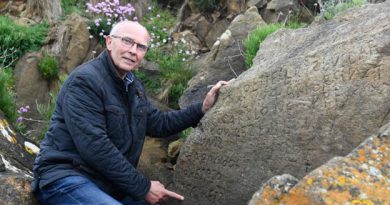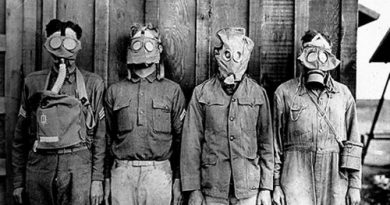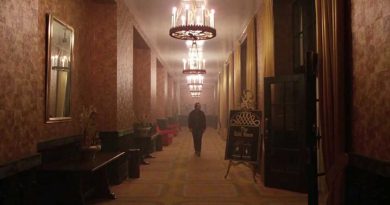Mysterious Woman – The Isdal Woman – Real Spy Thriller
Source : http://en.wikipedia.org/wiki/Isdal_woman
The Isdal woman (Norwegian: Isdalskvinnen) is the subject of an unsolved case involving an unidentified woman found dead at Isdalen Valley in Bergen, Norway on 29 November 1970. Considered one of Norway’s most profound mysteries, the case has been the subject of intense speculation over the years regarding the identity of the victim, the events leading up to her death and the cause of death. Public interest in the case remains significant.
The woman was found in a part of Isdalen popularly known as “Death Valley”, which lies in the direction towards Mount Ulriken. Next to the scene police found a burned-out passport. The autopsy showed that the woman had suffered blunt force trauma to the neck and had taken several sleeping pills before she died. The official police report concluded suicide, but this conclusion is highly controversial.
Discovery
On 29 November 1970 at approximately 13:15, while hiking in the hills of Isdalen valley outside of Bergen, a university professor and his two young daughters came across the partially charred remains of a naked woman hidden among some rocks at a remote hiking trail. Present at the scene were large amounts of sleeping pills, and bottles of petrol. A full scale murder investigation was immediately initiated and the case has since evolved to become the most comprehensive criminal case by the Bergen police.
Investigation
Police traced the woman to two suitcases that were found in an NSB train station in Bergen. Police also found that the labels had been removed from every piece of clothing she wore, and that her fingerprints had been sanded away.
In addition, police discovered a prescription for a lotion, but both the doctor’s name and date had been removed. Within the lining on one suitcase police discovered 500 German marks. Partial fingerprints were found on a few pieces of broken glass. They were insufficient for an identification, but police suspected that they belonged to the dead woman. The police had made phantom drawings on the basis of witness descriptions and analysis made from the body; these drawings were published in the media and disseminated via INTERPOL in a number of countries.
Police eventually found out that the woman had travelled around Norway and Europe with nine different identities: Jenevive Lancia, Claudia Tjelt, Vera Schlosseneck, Claudia Nielsen, Alexia Zarna-Merchez, Vera Jarle, Finella Lorck and Elizabeth Leen Hoywfer. All of these identities were false. According to witness sightings the woman used various wigs, and in the trunk there were found several cryptic diary entries. The codes were later deciphered by police who concluded that they were coded dates and places the woman had previously visited. The woman’s teeth were thoroughly checked during the autopsy, and the way the dental work was performed indicated that the woman had been to a dentist in Latin America.
Witnesses reported that the woman had spoken several languages: French, German, English and Flemish. The woman had stayed at several hotels in Bergen. She had repeatedly changed rooms after checking in, when she wanted a room that had a balcony. In the papers she signed the check specified that she was a travelling saleswoman and an antiquities collector. The woman was fond of porridge with milk, as this order was left at several of the hotels where the woman had stayed.
After the woman’s suitcases were found, police sought the help of the city’s most prominent textile retailers to identify her dress. It was concluded that the woman had a somewhat challenging style, which was marked by Italian taste.
Early in the investigation police contacted an Italian photographer who had given the woman a lift and had dinner with her at Hotel Alexandra in Loen. The Italian had previously been questioned in connection with a rape case, though those charges were dismissed. One of the Italian’s postcards that were sold in Norway was also found in the woman’s luggage. The photographer claimed the woman had told him that she came from a small town north of Johannesburg in South Africa, and that she had six months to see the most beautiful places in Norway. This line of inquiry did not lead to any new information about the woman’s identity.
The last observation of the so-called Isdal woman was when she checked out of room 407 at the Hotel Marin. She paid in cash and then asked to be picked up by a taxi. The woman was described as 3040 years old, 164 cm tall, wide hips, small eyes and with good looks. Hotel staff said the woman stayed mainly in her room, and seemed to be on guard. Another hotel guest told police that she smoked South State cigarettes.
One witness testified that she had overheard the woman while she was talking to a man across the hall in a hotel in Bergen and that she heard the woman say “Ich komme bald” (“I am coming soon”).
Last moments
On 24 November, five days before the discovery of the woman, a local 26-year old man was hiking with friends around the same area. He reported to have come across a woman of foreign appearance, her face completely distorted by fear. He noted that the woman was dressed elegantly, although not appropriately for being outdoors, let alone hiking in the hills. As they passed each other she formed her mouth as if to say something but appeared intimidated by two black-coated men who followed her. The men also had a foreign appearance.
The 26-year-old contacted the police after hearing that a young woman was found dead in the same area. He immediately recognized her from the phantom drawings, but according to him the policeman with whom he spoke answered “Forget her, she was dispatched. The case will never be solved”, he followed the advice, waiting 32 years to publicly tell the story
Another Version
On the morning of 29 November 1970, a maid entered a hotel room in Isdalen, Norway, and found a woman, dead. The body had been deceased for several days. Also, horrifyingly, it had been partially burned in the ashes of a fire in the fireplace! Located next to the body was a St. Hallvards liquor bottle, 2 plastic bottles smelling of gasoline, a glass that had contained sleeping pills (later identified as Fenemal), and a silver spoon with the monogram filed off.
Witnesses at the hotel recognized her as a pretty woman who had checked out of the Hordaheimen hotel, also located in Norway. She had signed the guest book with a false name.
Later witnesses said that she had leased storage lockers at a nearby railway station. When the boxes were opened, the mystery deepened because inside the police found clothing, a wig, several eyeglasses (no prescription), similar silver spoons, 500 German marks and 130 Norwegian crowns, also a black notebook with number and letter codes. Building maintenance workers in NYC and around the world often find strange items in storage lockers. At least no industrial cleaning service was needed to clean out the contents of her locker.
Police later theorized that the code was some sort of logbook–possibly her travel route and contacts in Norway. All labels had been removed from the clothing, and all identifying things removed from the luggage. In short, there was no way to possibly figure out who the woman was, or where she had come from. Someone had gone to a lot of trouble to make sure that there were no leads!
To further complicate the case, police found she carried nine passports, all from different countries, all in different names!
She was described as being a brunette, pretty, and obviously well-traveled for she spoke German, English, Belgian and French, all with an unknown accent.
Working with sketches of her description, and after laboriously decoding her logbook, the police were able to come up with a record of her travels:
March 20, 1970 – she travels from Geneva to Oslo.
March 21-24, 1970 – she lives at Hotel Viking in Oslo using the name “Genevieve Lancier”.
March 24 – flies from Oslo to Stavanger, takes the boat to Bergen, stays the night at Hotel Bristol using the name “Claudia Tielt”.
March 25 – April 1- stays at hotel Scandia in Bergen, still as “C. Tielt”
April 1 – travels from Bergen to Stavanger, and on to Kristiansand, Hirtshals, Hamburg and Basel, Germany. That was the last trace of her in Norway until she returned six months later. It is possible that she assumed a different identity while in Germany.
October 3 – travels from Stockholm, Sweden to Oslo, Norway, and on to Oppdal, Norway, which was a popular ski resort. She stayed the night at the hotel there together with Italian photographer Giovanni Trimboli.
October 22 – stays at hotel Altona in Paris.
October 23 – 29 – stays at Hotel de Calais in Paris, France.
October 29 – 30 – goes from Paris to Stavanger and on to Bergen, Norway.
October 30 – November 5 – checks in to hotel Neptune using the name “Alexia Zerner-Merches”; she meets an unknown man at the hotel.
November 6 – 9 – she travels to Trondheim, Norway, and stayed at the Hotel Bristol using the name “Vera Jarle”.
November 9 – goes to Oslo and on to Stavanger where she stays at Hotel St. Svitun using the name “Fenella Lorch”.
November 18 – goes with the boat Vingtor to Bergen where she stays at hotel Rosenkrantz using the name “Elisabeth Leenhower” from Belgium.
November 19- 23 – stays at hotel Hordaheimen, stays in the room a lot and seems watchful.
November 23 – leaves the hotel in the morning, pays in cash and goes to the railway station where she places 2 pieces of luggage in a depository box.
November 29 – she is located dead in Isdalen.
The Norwegian police claim she committed suicide. Espionage experts say she was a spy, trying to arrange a buy of some kind of radioactive material or some sort of clandestine information. Others say that the answers to her identity will be found in a vault in Moscow. There are other rumors which theorize she was killed by someone she was close to.
The truth about the mystery woman has never been revealed. However, a book has been written about this case by Tore Osland & Isdals Kvinnen: Operasjon Isotopsy, or in English, Operation Isotope.
Discuss article



